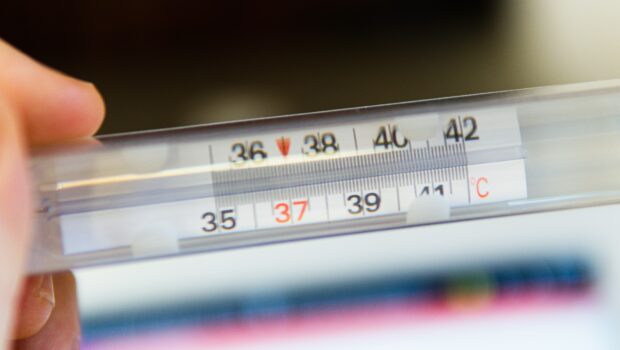Beat your Hay Fever: The Ultimate Guide
Hay fever is one of the most common respiratory conditions in the world, with an estimated 10% to 30% of the worldwide adult population being affected by recurring symptoms of the condition. The prevalence of the allergy is increasing, and whilst we don’t know exactly why this is, there are several factors that could be contributing. Since it’s becoming a growing issue, Pharmica has put together this ultimate guide to beating hay fever, explaining the symptoms, causes, and methods of prevention and treatment.
What is hay fever?
Allergens are everywhere. Whether you’re inside or outside, at various times of year there are all sorts of troublesome particles that can cause a stir when breathed in. When this happens, our body’s immune system assesses the threat of the intrusive substance, and misidentifies it as a threat (when it is in fact harmless). The immune system springs into full on attack-defence mode, with our antibodies signalling to our blood vessels to widen and to increase the production of anti-inflammatories like histamine. The typical symptoms we associated with hay fever are then experienced as this immune system response. These can be grouped into 2 categories:
- Seasonal hay fever – this is caused by airborne pollen, mould spores, or grass, to which the body is allergically sensitive, and occurs most often during spring and summer when levels of these allergens in a cubic meter of air are highest.
- Perennial hay fever – this is caused by pet hair, inside mould, or dust mites, and is typically experienced indoors at any time of year.
What are the symptoms of hay fever?
Not everyone will experience all of these bodily reactions to allergens, but these are the most common.
- A drippy or blocked nose
- Itchiness, redness or watering of the eyes
- Itchiness in the throat, mouth or skin
- Sneezing and coughing
- Headaches
- Fatigue (typically due to disturbed sleep from experiencing another symptom)
What causes hay fever?
There are several triggers of hay fever, some environmental but some genetic, so keeping away from the causes isn’t always as simple as it may first appear.
Allergens:
- Pollens
- Fungi or mould
- Pet hair
- Dust mites
- Smoke (from cigarettes but also from things like bonfires)
- Strong perfumes
Pollen is one of the most common of seasonal hay fever and the one that leaves a lot of people with severe symptoms, and sadly it looks as if it’s only getting worse for these individuals. Pollen levels are actually increasing, as climate change takes effect and pollen count is up. This is likely to produce the highest pollen count we’ve ever had in the next couple of years, meaning extra suffering for those with hay fever. On top of this, the population’s sensitivity to pollen and allergens as a whole has increased substantially over the past year, as all the time spent indoors during various nation-wide lockdowns around the world has meant that we haven’t been exposing ourselves to small amounts of allergen particles to help train our immune system to not go into extreme defence mode. On this basis, there’s every chance that this year we will see many people develop hay fever symptoms for the first time.
Genetics:
It may seem an unlikely contributor, but your genes play a large role in your predisposal to allergies. If your parents or grandparents experience hay fever, then your chance of also being oversensitive to allergens and developing symptoms is considerably higher. It’s worth tracking back your family history to understand whether your risks are higher.
What aggravates hay fever symptoms?
The following substances, although not hay fever causing, are known to make your symptoms worse, and should therefore be avoided if trying to best manage your triggers.
- Smoke
- Hair spray, perfume or other strong odours such as air fresheners
- Vehicle fumes or other air pollutants
- Sudden variations in temperature and humidity
How to manage hay fever symptoms?
The spring and summer seasons can be extremely frustrating for hay fever sufferers, since they are unable to go outside without experiencing nasal irritation. Thankfully, there are ways in which you can limit the impact of allergens on the body.
- Shut windows to stop pollen from flying indoors. Use a fan to keep cool in hot weather, without needing outside air.
- Some hay fever sufferers get irritated eyes, so wearing sunglasses can reduce the chance of allergens touching the eyes.
- Run a dehumidifier so that mould doesn’t grow indoors, adding to your allergies. This is especially needed if you’ve closed the windows as the air will be still and humidity can build up easier.
- Clean your hands properly, particularly after interacting with animals and pets.
Antihistamine tablets
We understand that you can’t always control the environmental factors that aggravate your hay fever, so it is wise to have some effective medication on hand to limit the discomfort. Antihistamine tablets prevent histamine from being produced and released in the body, which is the natural response from the immune system when coming into contact with allergens. These small, oral tablets are taken once per day, and can provide relief for up to 24 hours. Their affordability makes them one of the most popular treatments for hay fever. Sadly, they can’t cure hay fever, but they are effective at controlling the symptoms. Fexofenadine is a popular antihistamine which doesn’t cause drowsiness, and blocks the histamine receptors in the spine.
If you want to learn more about common health conditions, visit Pharmica’s health centre blog.
Photo by Matteo Fusco on Unsplash















